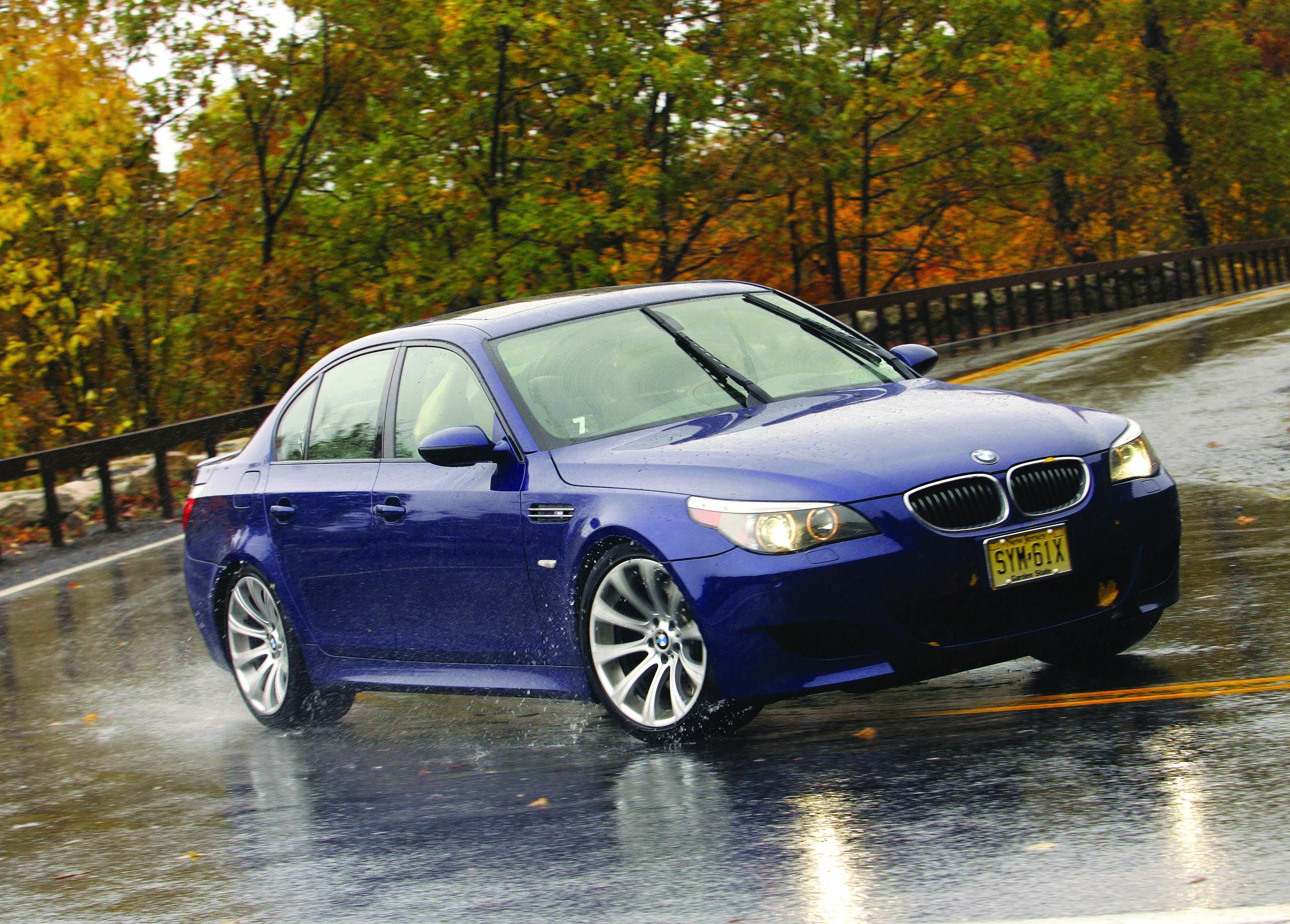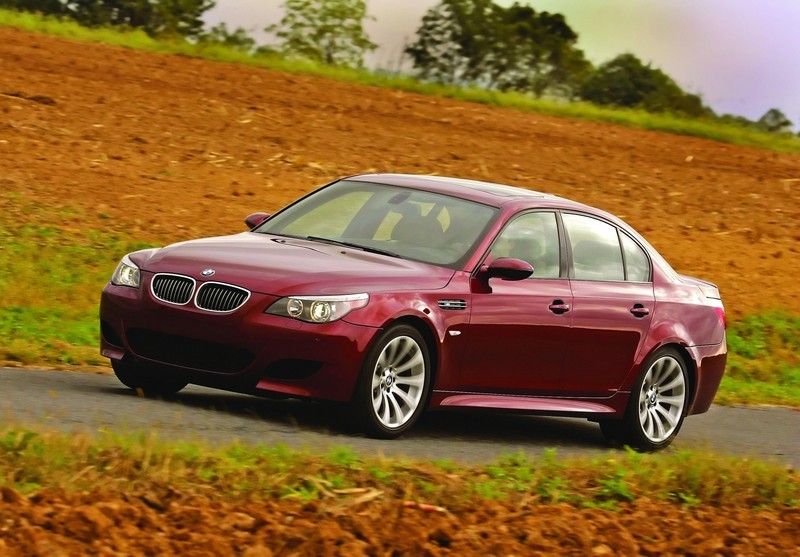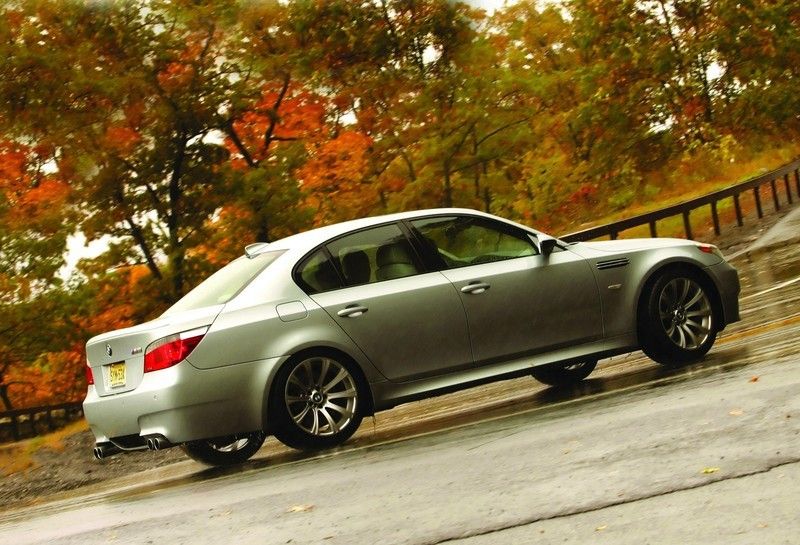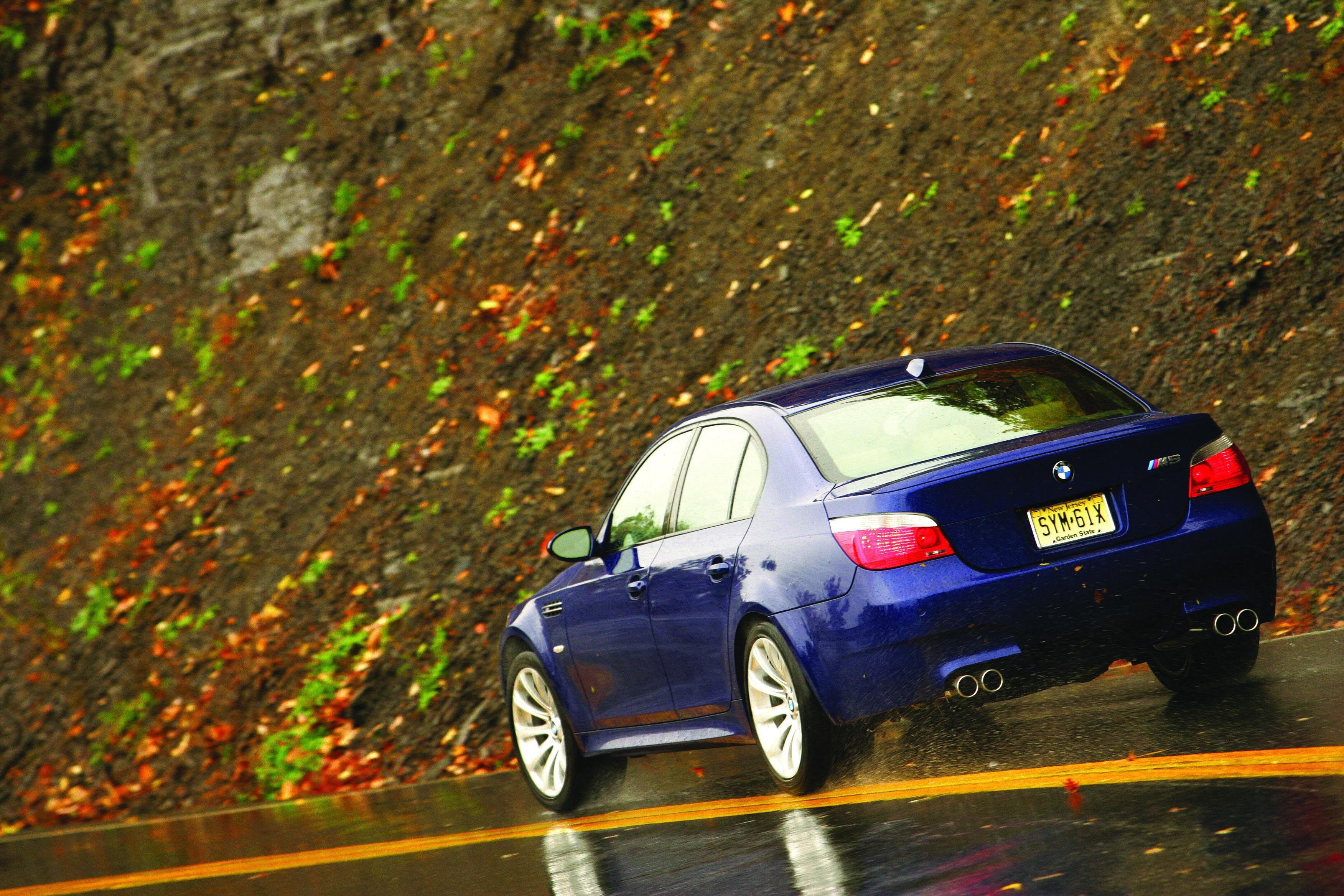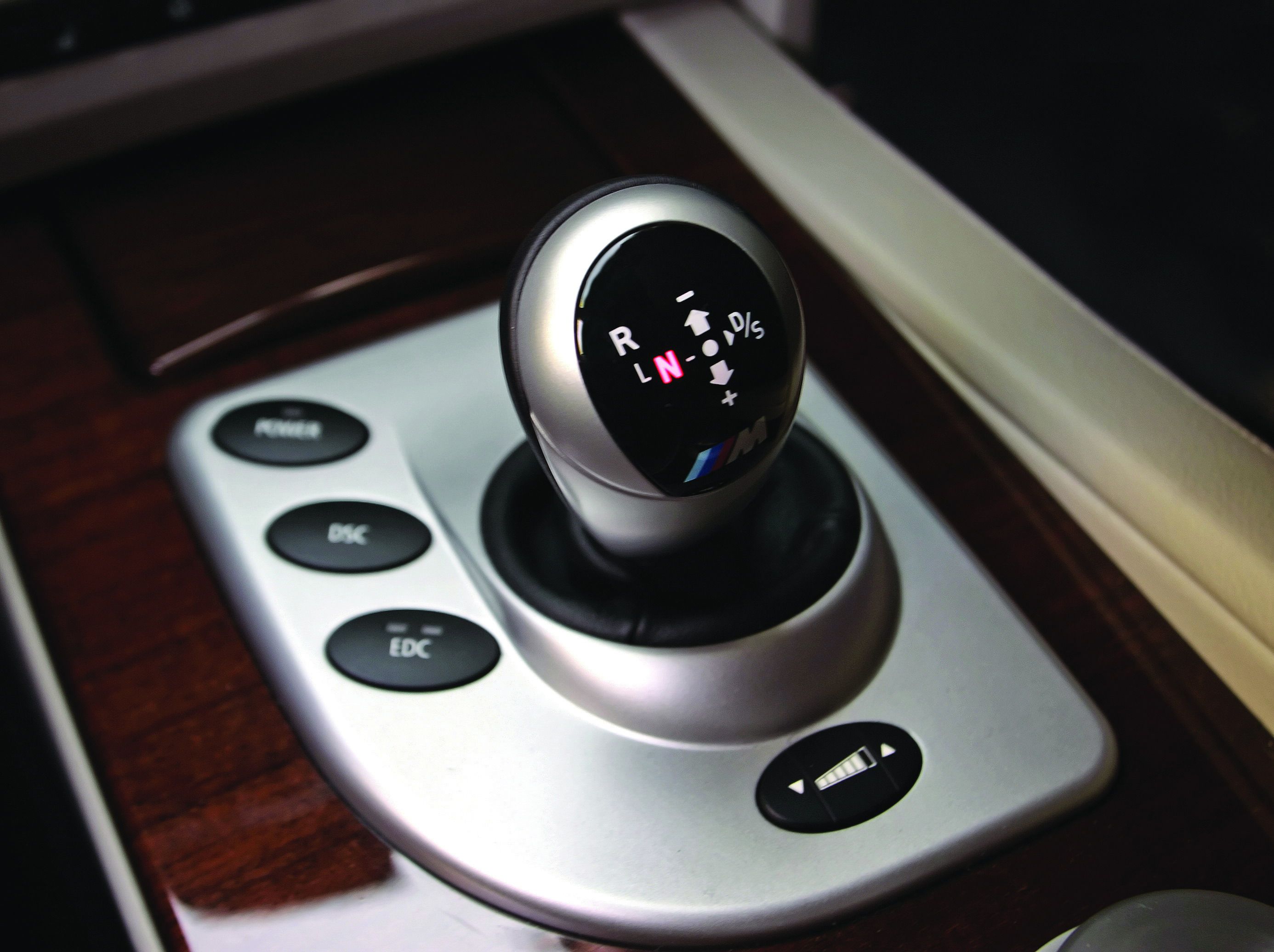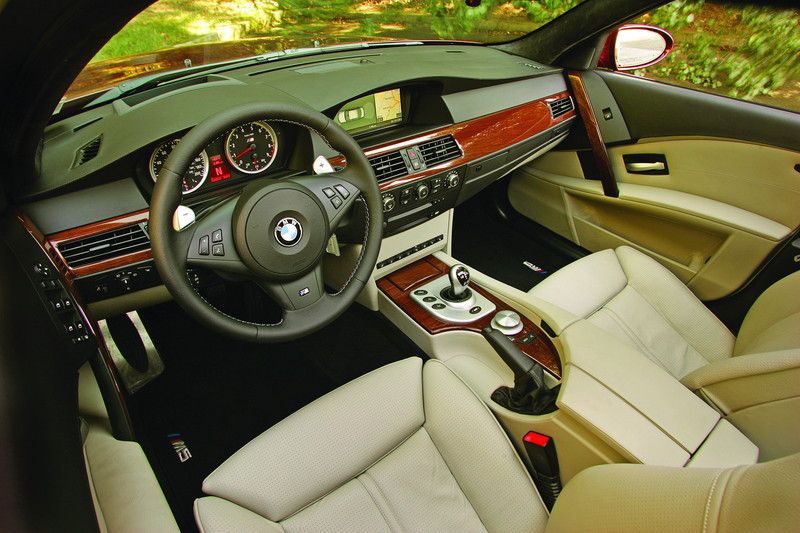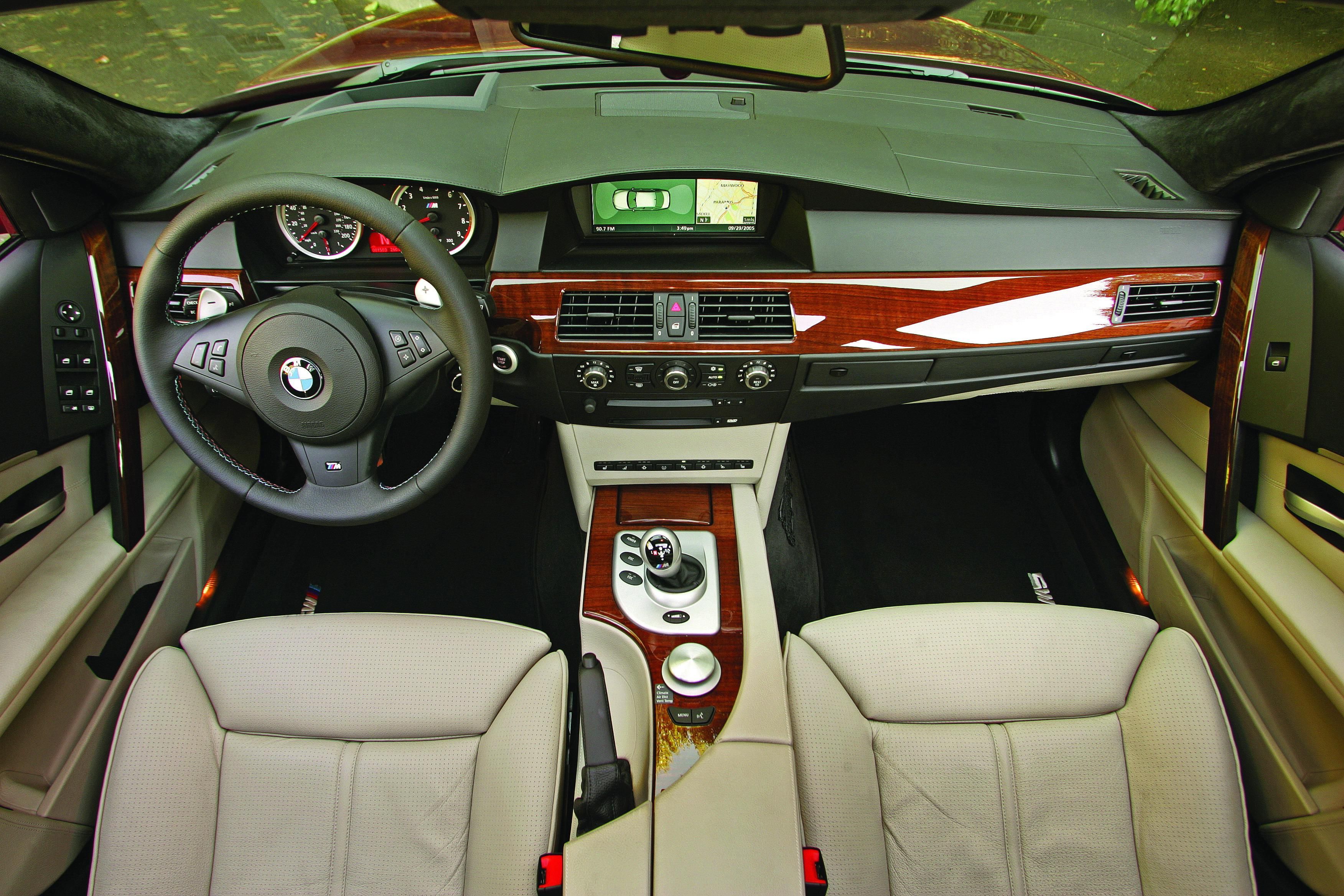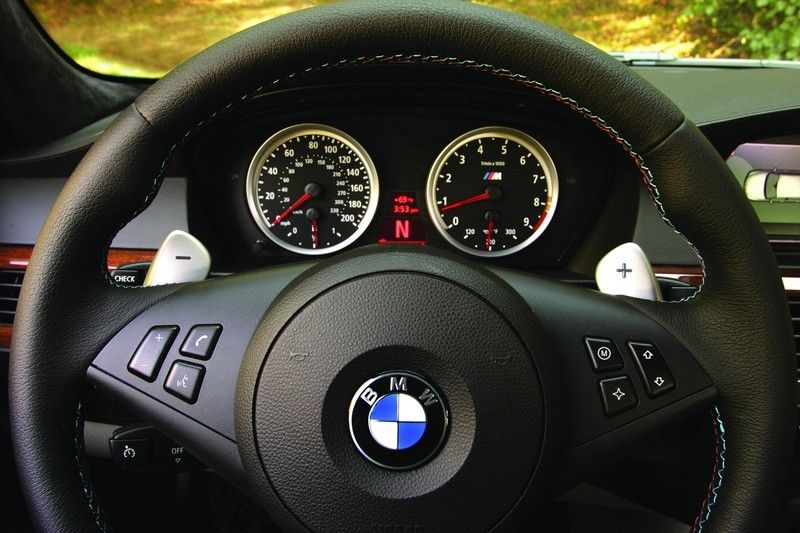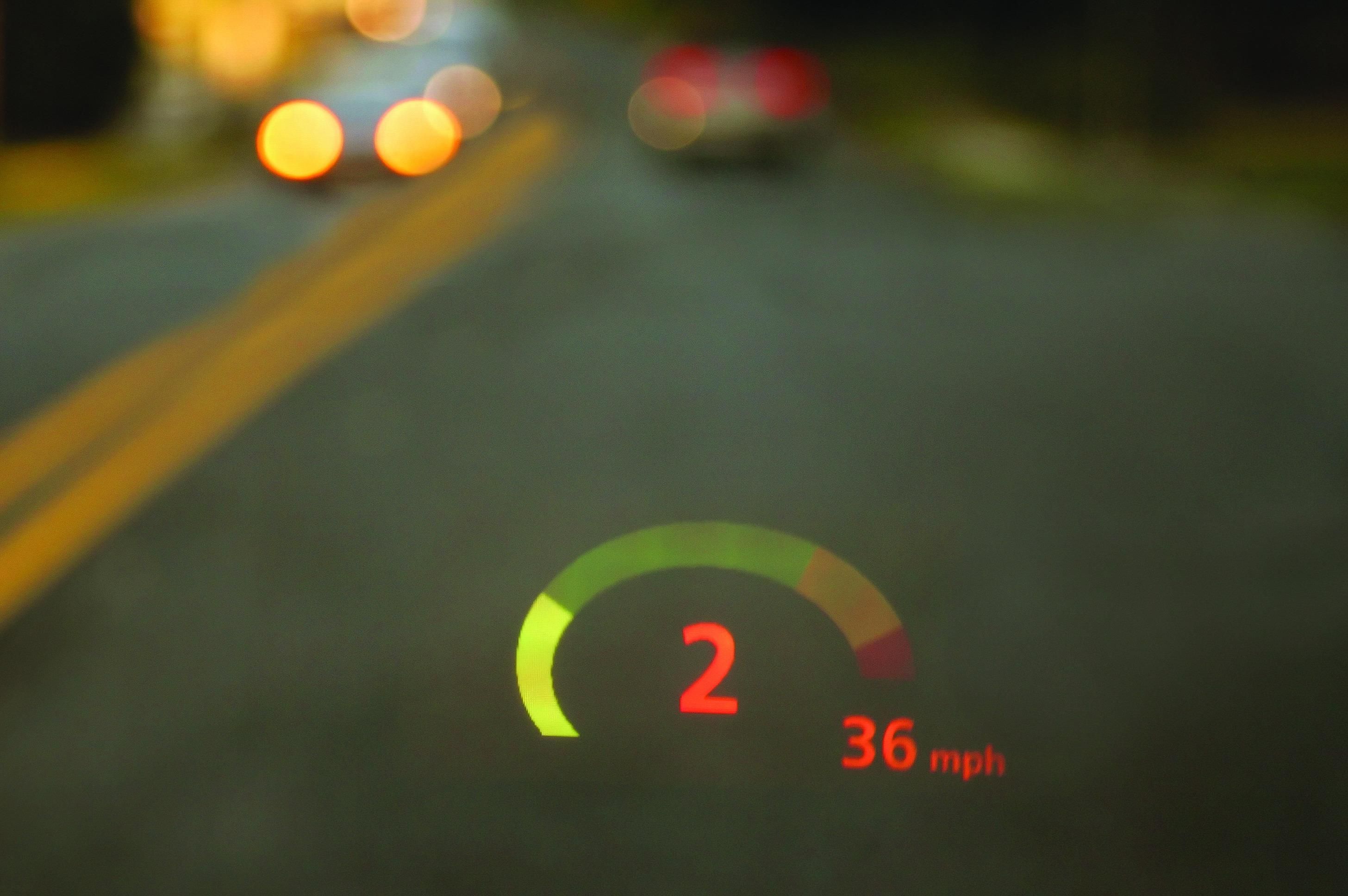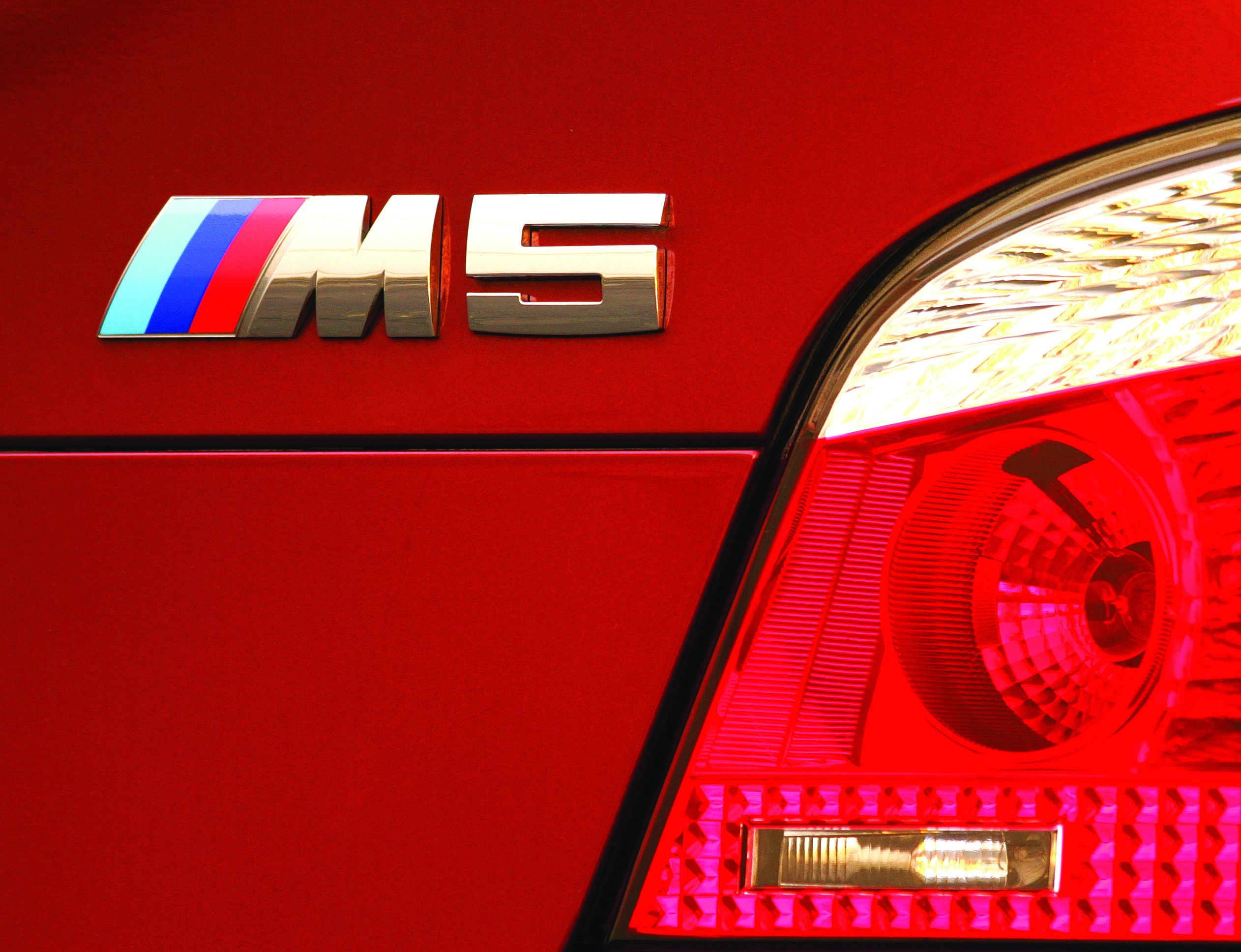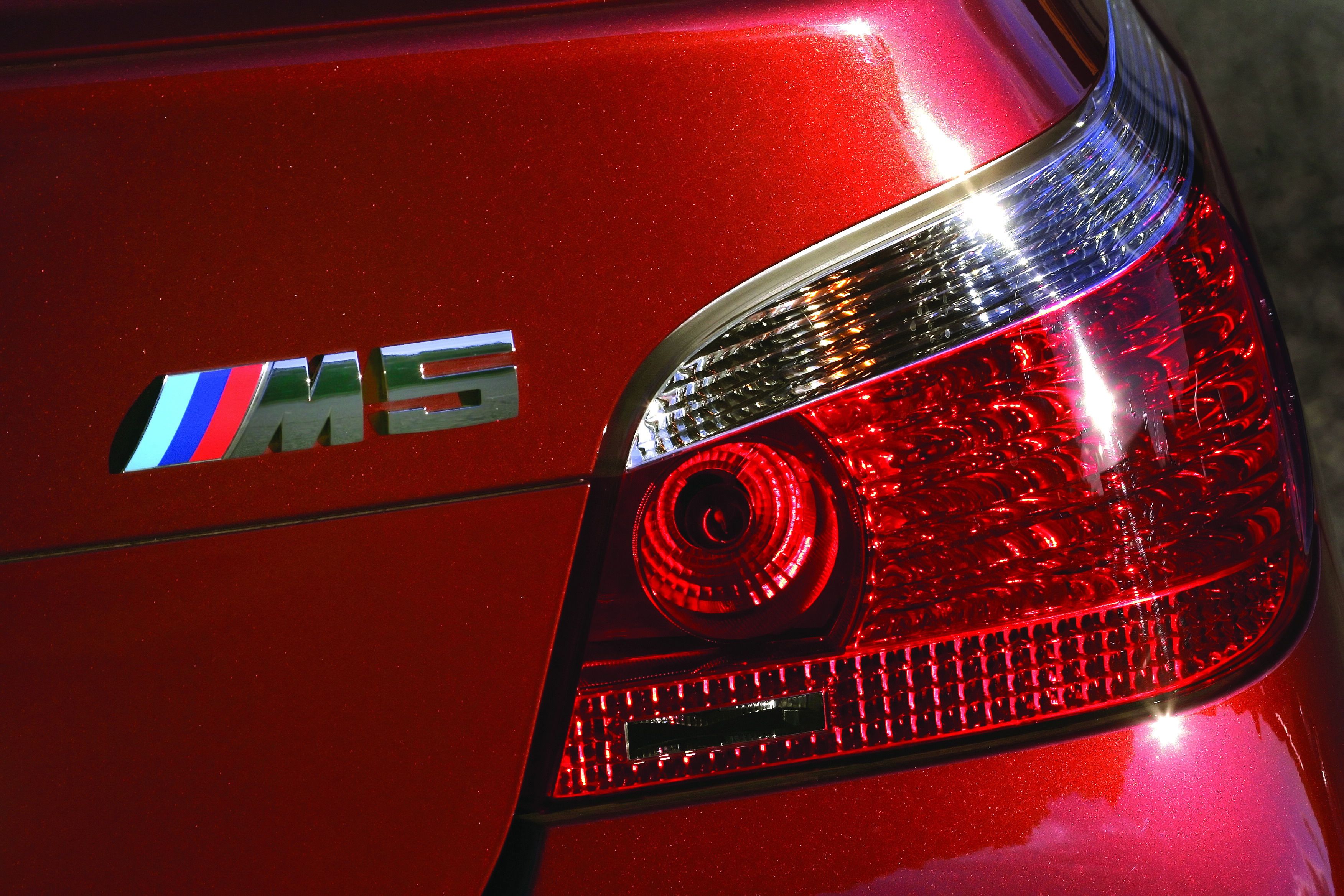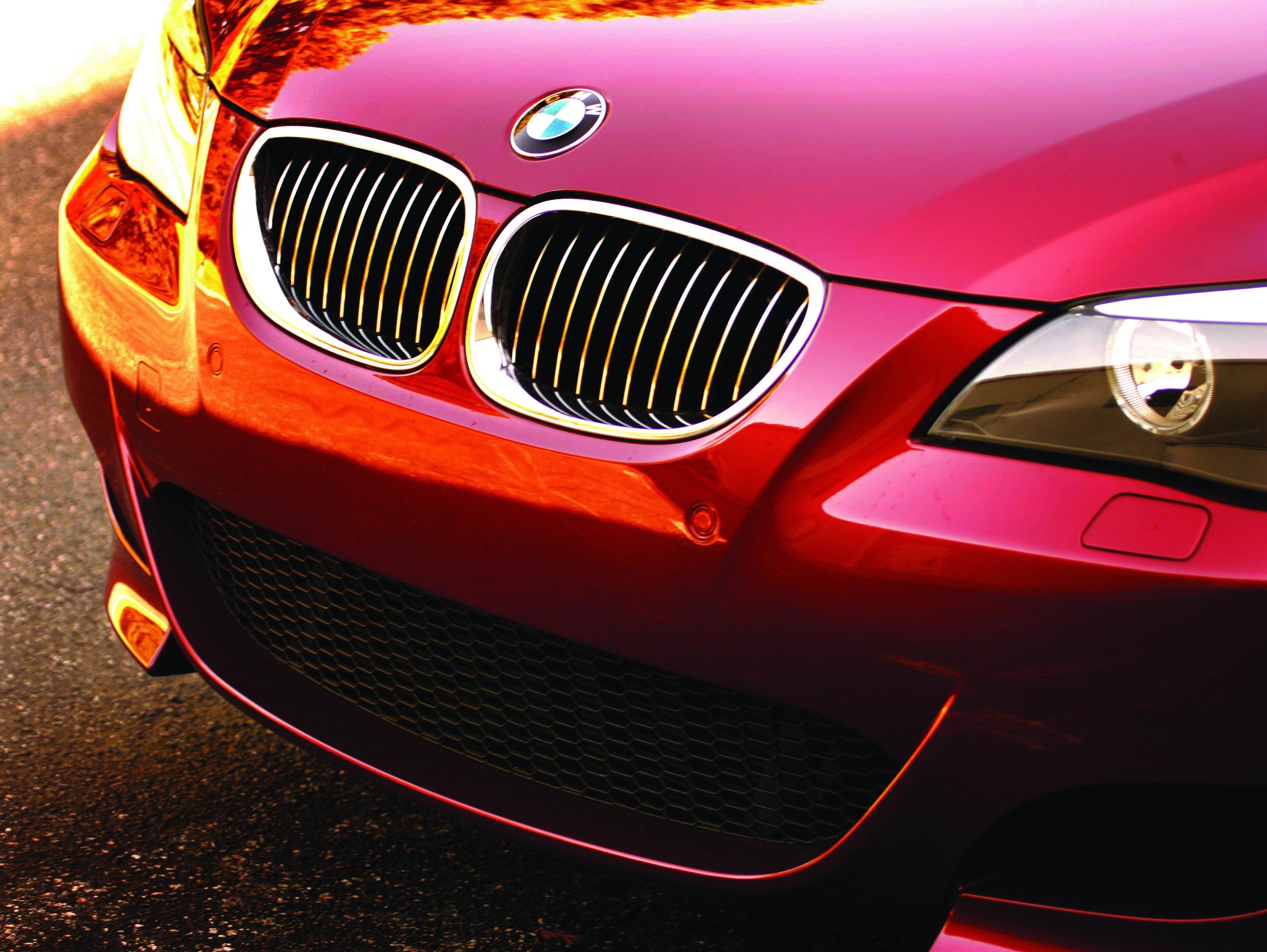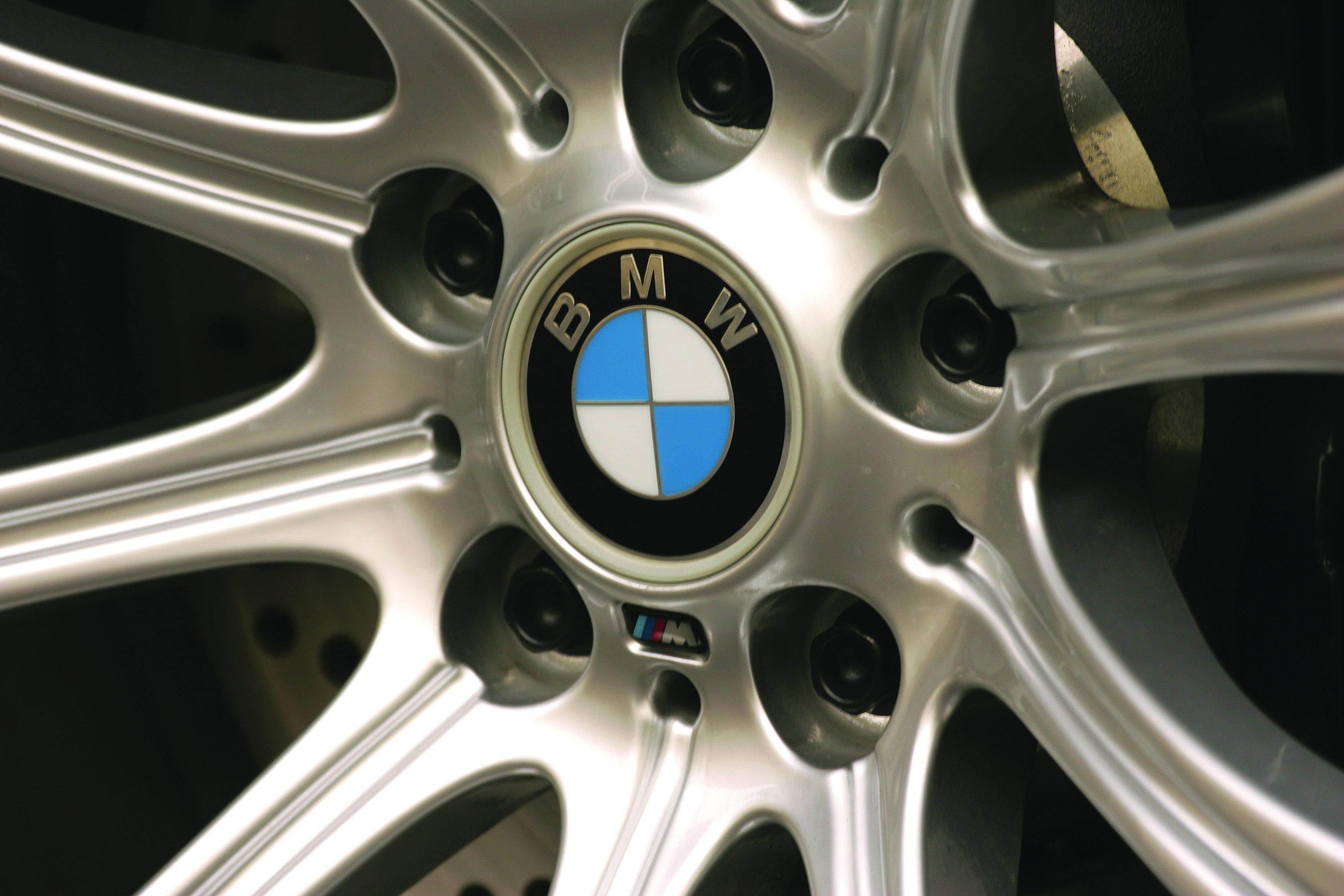Just the name awakens anticipation and excitement. There have been three generations of BMW M's ultimate sports-luxury sedan up to now; the newest one arrives to perhaps the greatest anticipation ever. Most certainly, it will generate even more excitement than its illustrious predecessors.
2006 BMW M5
- Make: Array
- Model: 2006 BMW M5
- Horsepower: 500@7750
- Torque: 6100
- Transmission: 6-Speed Sequential
That's because the newest BMW M5 takes the key M5 attributes to an even higher level than its predecessors: more masterful performance, more technical sophistication, more luxury - all achieved by the application of new design, new technology, new engineering. Indeed, one can logically assert that the M5 is both sports car and luxury sedan; and it incorporates new technology that enables its driver to determine precisely his or her preferred balance of these attributes. In its 23/04 issue, the German magazine Auto Zeitung put it this way:
“The 5.0-liter V-10 would upgrade many super ‘sports cars'...The power sport seats meet the highest demands for comfort, provide plenty of lateral support and are upholstered in fine leather...For a nearly 2-ton sedan, it offers outstanding cornering dynamics..."
“Yet the fascinating thing about the M5 is its huge bandwidth of comfort, luxury and dynamics, which other manufacturers can cover only with several model series.”
Already proving its command of European roads and Autobahnen, the new M5 entered production for the U.S. market in September '05 and begins arriving at U.S. BMW centers during October. Though based on the current 5 Series Sedans, the M5 is packed with engineering, technology, design and luxury that are all its own. Like all BMW vehicles bearing the “M” logo, it has been developed by BMW M, the BMW subsidiary for racing and high-performance automobiles, and is produced at BMW's Dingolfing, Germany plant.
Performance & efficiency
- 5.0-liter V-10 engine – 500 hp, 383 lb-ft. torque (previous M5: 4.9-liter V-8, 394 hp, 368 lb-ft.)
- All-new 7-speed Sequential Manual Gearbox (SMG)
- Handling, ride & braking
- M Variable Differential Lock
- Specially modified and calibrated front and rear suspension
- Electronic Damping Control, BMW’s system of electronically controlled suspension in a new and special BMW M version with three modes
- Special steering system, “quicker” than that of the 5 Series and offering two levels of speed-sensitive power assist
- Compound, cross-ventilated disc brakes, BMW’s largest-dimensioned and most powerful ever
- 19-in. alloy wheels with Z-rated performance tires in differentiated front/rear sizes
- BMW M-calibrated Dynamic Stability Control with selectable M Dynamic Mode
- MDrive, a submenu in the iDrive system that allows the driver to “set up” his or her own preferred performance and handling settings for instant recall.
Exterior design & function
- Unique front bumper/spoiler/air-intake ensemble
- BMW M “gills” in front flanks
- Special rocker panels with sharp accent line
- Satin Chrome Shadowline side-window trim
- M exterior mirrors, shaped to enhance aerodynamics
- Distinctively shaped lower section of trunklid
- Rear bumper/spoiler/diffusor ensemble
- Four stainless-steel exhaust outlets
- Special BMW M color selection
Ergonomics, luxury & convenience
- Specific instrumention
- Available Head-up Display with BMW M information set
- Short, illuminuated SMG shift lever
- Heated M sport front seats, 16-way driver’s/14-way passenger’s
- Optional M Multi-function Comfort front seats, 18-way plus Active Backrest Width for enhanced lateral support during cornering
- Merino Leather upholstery, available in three treatments
- Brushed-aluminum interior trim standard, two types of wood optional at no extra cost
-----
This new V-10, called S85 in BMW engine parlance, is yet another masterpiece of power from BMW M, setting a new milestone for the performance that can be achieved in a roomy 5-passenger sedan, with generous trunk space and all the luxury and safety features one expects from BMW. So let's look at the vital attributes of this monumental new engine, and see how they contribute to the impressive outcomes just listed.
Why 10 cylinders? Elmar Schulte, head of engine development at BMW, has a disarmingly straightforward explanation. “We wanted 5 liters. The ideal cylinder displacement is 0.5 liter. To get 5 liters, we needed 10 cylinders.”
In its general layout, the new M5 engine relates to, and was inspired by, BMW's Formula 1 racing engine - also a V-10. (Both engines' major castings are done at the same BMW plant.) Though unusual, a V-10 is also a satisfactorily balanced configuration, requiring no balance shafts to make it acceptably smooth. Instead, the crankshaft incorporates two large counterweights. Reporting its driving impressions in the December '04 issue, Road & Track commented: “Run up through the gears out of a slow corner and the engine pulls with a smoothness that easily rivals the M5's engine, arguably one of the finest V-8s around.”
Unique sound is a further attribute of the V-10. Even when idling, it sounds exotic; according to Motor Trend (December '04), “The yowling twin-five snarl as you sear toward max revs is an experience that etches itself deep in your memory. No, it's not super-car loud - this car always retains the vestige of sedan refinement, and you could mount a sustained assault on the Autobahn while a rear-seat passenger sleeps.”
High-rpm concept. Like the 6-cylinder M3 engine, the M5's V-10 was conceived to exploit high engine speeds to achieve high performance. Its redline is 8250 rpm; its maximum power of 500 hp is achieved at 7750 rpm, its maximum torque of 383 lb-ft. at 6100 rpm. This strategy, which avoids extreme torque and instead lets the driver extract super performance by “revving,” allows the use of relatively light, low-mass reciprocating components inside the engine; in turn, this helps moderate overall vehicle weight and optimize front/rear weight distribution.
Like the M3 engine, the M5 unit does not employ the Valvetronic system now found in BMW's regular-production V-8 and V-12 engines as well as the new N52 6-cylinder unit in the 3 and 5 Series. Though Valvetronic eliminates throttles and their throttling effect, it is not (yet) suitable for a very high-rpm engine like this. Instead, the V-10 employs a typical BMW M valvetrain, with its 4 valves per cylinder actuated via “box-type” hydraulic lifters derived from racing practice. These are small, light and extremely rigid, as they must be for 8250 rpm; they are also specially shaped for efficient valve actuation, with an oblong cross-section (not round like bucket tappets), slightly curved contact surface and guiding tab to ensure a consistent position in their bores.
Also light in mass are the valves themselves, with stems of only 5 mm/0.2 in. And as on the new 6-cylinder, the camshafts are hollow, further reducing valvetrain inertia and enhancing engine response. Altogether, the valvetrain's reciprocating mass has been reduced 17.5% from the predecessor engine; this is an important facet of the high-rpm concept. So are light but ultra-strong pistons and connecting rods.
As in all recent M engines, a special High-Pressure Double VANOS system varies the intake and exhaust valves' timing steplessly and ultra-quickly. As on the M3 engine, the VANOS system has its own hydraulic pump; this contrasts with BMW's regular-production engines, whose VANOS draws its pressure from the main oil pump. The resulting very high pressure (up to 115 bar/1668 lb./sq in.) enables the valve timing to be varied more quickly than on the regular engines - yet another factor in the high-rpm concept.
Four overhead camshafts actuate the valves. Each of the two intake camshafts, positioned inboard, is driven by a simplex chain; from the camshafts' chain sprockets, the exhaust camshafts are driven by gears. The system is extremely rigid - again, as it must be for this engine's level of rotational speed. Each chain is hydraulically tensioned and needs no periodic adjustment or replacement.
A throttle for each cylinder. Maintaining a BMW M tradition, the V-10 has an individual, electronically controlled throttle for each cylinder.
“Breathing” - an engine's ability to ingest and combust air - is naturally a top priority in a super-performance engine. Air is taken in at the vehicle's front, passes through two large intake silencers and two air-mass meters, and then flows into the voluminous plenum (made of a lightweight compound material) atop the engine. From there, air passes through equal-length intake trumpets and the 10 throttles to the individual cylinders. The entire assembly of plenum and trumpets is attached to the throttle housings via a flange (one per bank) that acoustically and thermally decouples the plenum from the engine itself.
Compared to most engines' single throttle (or even to the throttle-less Valvetronic system of contemporary BMW engines), these are a costly feature, reserved for the highest-performance engines. Positioned much nearer the cylinders than a single throttle can be, they eliminate a “lag time” inherent in airflow and foster lightning-fast response to throttle movements. Motor Trend characterized this engine's throttle response as “blazingly urgent.”
Actuation of the throttles is electrically driven and electronically controlled. Each cylinder bank's five throttles are actuated from a single shaft. Via the accelerator pedal, the driver gives the commands. In turn, these commands are processed by the engine control module and received by a DC servo motor (also one per cylinder bank). The motor drives the throttle shaft through a tiny gearbox.
Via the MDrive system (described later), the engine's maximum power and the throttles' response to the accelerator pedal can be set to different levels; see MDrive.
Ultra-high compression ratio. At 12.0:1, the V-10 again notches up BMW's highest current compression ratio. The higher the compression ratio, the more power can be extracted from a given engine size, so: another factor in the V-10's performance.
Ionic-current technology. In a “world first” for such a high-revving engine, and a first for BMW, BMW M's engineers have applied an exotic technology to the knock control that is crucial with such a high compression ratio. Instead of piezoelectric knock sensors positioned in the cylinder block to detect detonation via sound-pressure level, the sparkplugs themselves do the knock-sensing - and do it incredibly quickly and directly.
The air-fuel mixture in an engine's cylinders has a certain electrical conductivity, which varies - especially as “knock,” or detonation, occurs in a cylinder. Built into the engine's electronics is circuitry that applies a small voltage across the sparkplug's electrodes just after it fires; the resulting ionic current is a function of the combustion process taking place. If knock (detonation) is incipient, the ionic current will so indicate; a signal goes to the engine's electronic control system and ignition timing is retarded appropriately. In all BMW knock-control strategies, each cylinder's combustion process is measured individually; if only one cylinder is tending to knock, only that cylinder will have its ignition timing retarded.

